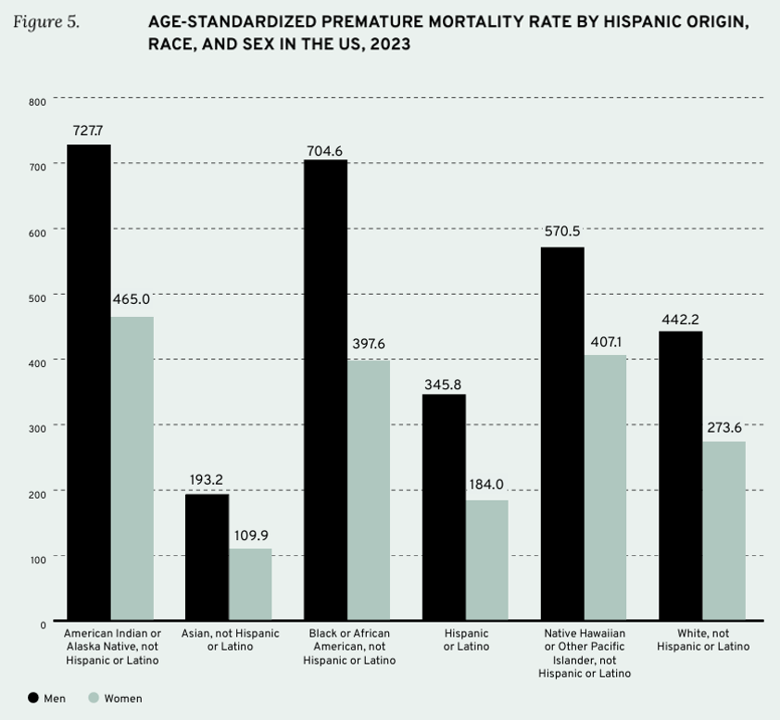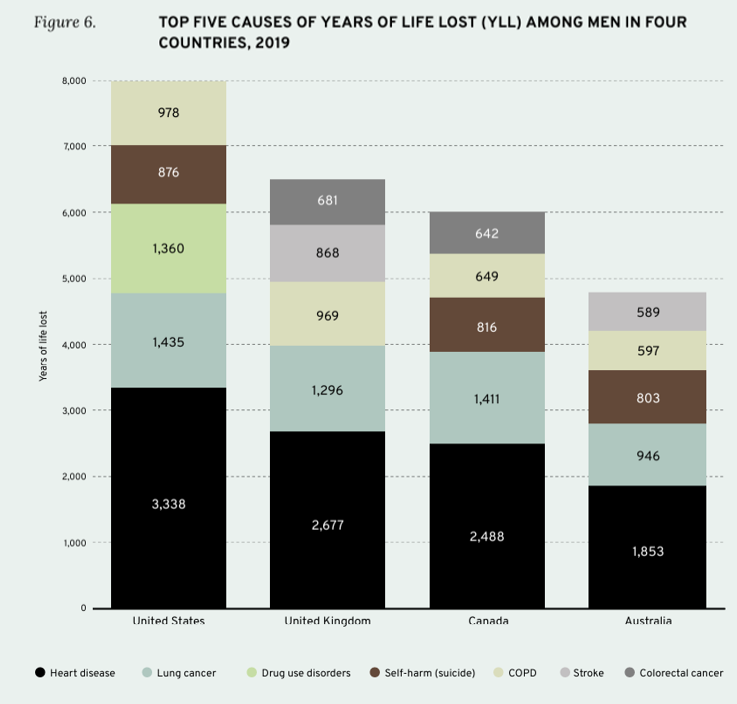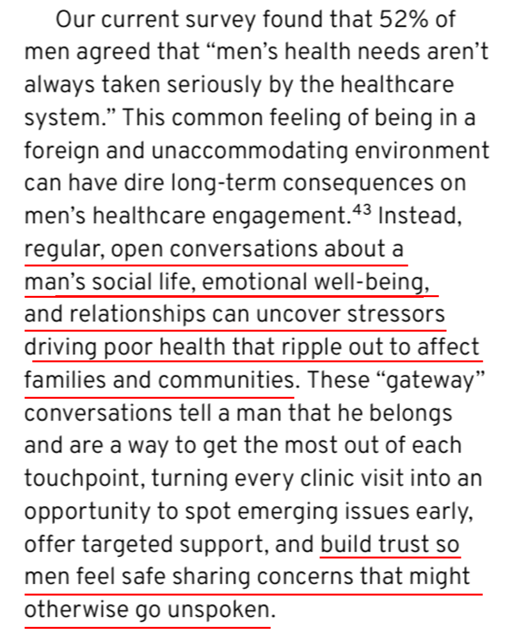HealthPopuli.com – Read More
In 2023, more than one-half of male deaths in the U.S. were premature: this is The Real Face of Men’s Health in America, a new report analyzing 2025 U.S. data from the Movember Foundation. The report was published as we approach November which the project chose for Men’s Health Month when launching in Australia over 20 years ago. 
Compared with the rest of the economically-developed world, Movember found that the “U.S. stands out for the sheer number of years of life lost (YLL), as well as the enormous toll of men’s early deaths from drug overdose and suicide,” which we’ve come to call the Death of Despair in America. [For my most recent discussion of the sad situation of Deaths of Despair, see this post in Health Populi for the update].
As with all health statistics, we see large variations and disparities in outcomes based on gender and ethnicity, as shown in the following graph.

First, we note the stark differences in the mortality rates of men vs. women in the U.S., where men’s death rates (in the black bars) are uniformly higher than women’s (represented in the green).
Then we see big variation across men’s (and women’s) ethnicity: the highest premature mortality rates are among men of American Indian or Alaska Native heritage and then among men who are Black or African American. Premature mortality rates then exceed women ethnic peer for Native American and other Pacific Islander people, followed by Whites. In this statistic, men of Asian ethnicity in the U.S. have the lowest premature mortality rate by far.

The Movember Foundation cares about men’ health globally, and so their data set in the 2025 report also compares American men’s health with peer in a few other countries: in this chart, the top five causes of years of life lost (YLL) for men in the U.S. are compared with men residing in the U.K., Canada, and Australia. Across each cause, we recognize that the YLLs are greater for U.S. men than for colleagues in the other 3 nations, whether for heart disease, lung cancer, and COPD. In addition, we note that YLLs for men in the U.S. are also higher for self-harm (suicide) compared with men in Canada and Australia.

Health Populi’s Hot Points: Please dig into this important report for more insights beyond those I chose to address here. For the Hot Points, I want to draw out the over-arching theme that, “Men’s health is never juts about men.”
It’s a “collective story,” the Movember folks conclude, “woven through caregiving, connection, and community.” As Movember succinctly puts the solution set, “improving men’s health is a hole-of-society project,” so recommendation speak to what stakeholder organization “can do” including the Federal government, state and local governments, philanthropy, employers, health care systems, and researchers and universities — along with men themselves. 
A longing for connections and stronger friendships is key to men’s well-being, especially with respect to mental health and the risk factors for Deaths of Despair. But even when dealing with chronic conditions like Killer #1, heart disease, the social fabric in a person’s life plays a role in helping bolster medication adherence and other “prescriptions” for healthy living, from eating healthfully at the family and/or friend table to activities getting people out and about, such as playing pickleball or social dancing. 
A key connection must be made by the health care system — providers, clinician, health insurance plans, pharma and suppliers. Most men believe the “system” does not take their health needs seriously.
This feeling of a lack of respect plays into peoples’ (in this case men’s) eroding lack of trust in health care. I’ve underlined some key phrases from the Movember report in red so we can focus on the need for men’s “regular, open conversations” about social lives, emotions, and stressors that underpin poor health and health disparities.
The opportunity: turn every clinic visit into a moment to build trust — “so men feel safe sharing concerns that might otherwise go unspoken.”
PS — I’ll be writing more about men’s health in November….so do stay tuned to some important updates on men’s health and a study with which I’ve been involved.
The post The Real Face of Men’s Health in America: Years of Life Lost, Yearning for Social Connection, and Eroding Trust in Health Care appeared first on HealthPopuli.com.





